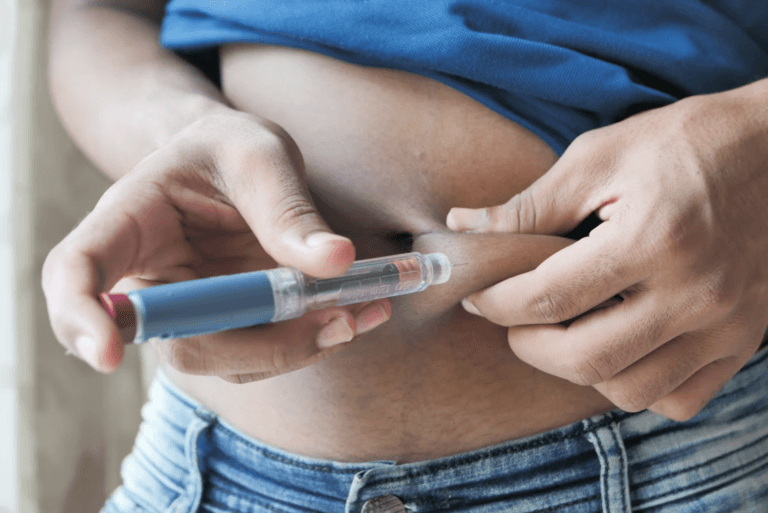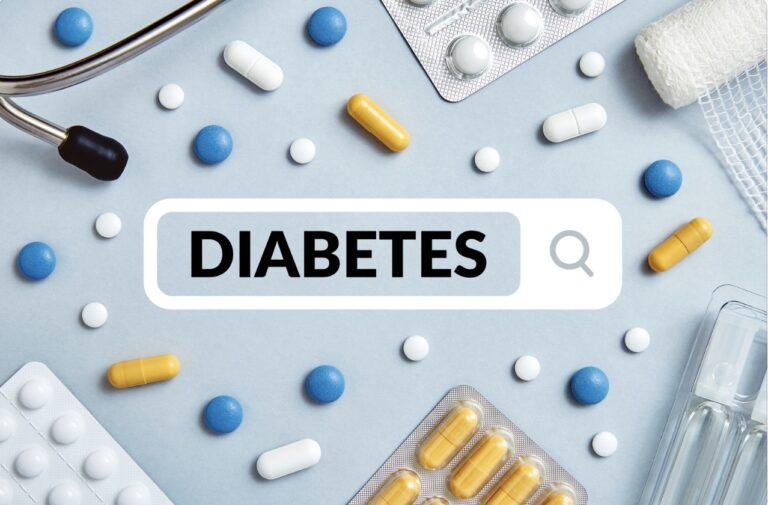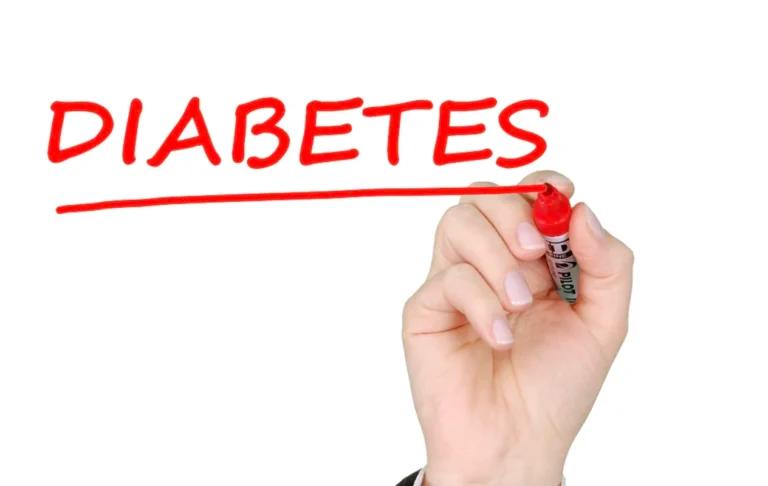Type 2 diabetes is a chronic condition that affects millions of people worldwide, and its prevalence continues to rise. If you’re aged 45 or above, it’s important to recognise the early signs and symptoms of diabetes so that you can take action to prevent or manage this health problem. In this blog post, we’ll look at the early signs and symptoms of type 2 diabetes.
What is Type 2 Diabetes?
Type 2 Diabetes mellitus is a chronic condition that affects how your body processes blood sugar (glucose). The hormone insulin produced by the pancreas is responsible for controlling the amount of glucose in the blood. When you eat, your body breaks down the food into glucose which your body’s cells use for energy. However, people with Type 2 Diabetes have difficulty using insulin properly (insulin resistance), which is the hormone that helps regulate glucose levels in the blood. This leads to an excess of sugar in the bloodstream, which can cause a myriad of health problems. While there’s no cure for Type 2 Diabetes, it can be managed with lifestyle changes and medications. Untreated Type 2 diabetes can lead to nerve damage, kidney disease or eye problems.
What happens when there is excess glucose in your body?
When there is excess glucose in your body, it can lead to high blood sugar levels. This can be particularly problematic for people with diabetes, who may struggle to regulate their blood glucose levels. When blood sugar levels are consistently high, it can lead to a range of health problems such as nerve damage (diabetic neuropathy), damaged blood vessels, nerves, kidney disease, cardiovascular disease, eye problems, and blurred vision leading to blindness.
It’s important to understand that having excess glucose in your body puts you at a higher risk of developing these complications, which is why it’s important to take steps to manage your blood sugar levels. By eating a healthy diet, getting regular exercise, and following your healthcare provider’s treatment plan, you can help keep your blood sugar levels in check and reduce your risk of long-term complications.
The diagnosis typically involves testing blood sugar levels after fasting for several hours or performing an oral glucose tolerance test. Appropriate treatment includes lifestyle changes such as diet and exercise modifications alongside medication management to help manage blood sugar levels and prevent further complications from developing.
Risk Factors
If you are aged 45 and above or have a family history of diabetes, it is crucial to recognise the early signs of type 2 diabetes. Risk factors for developing type 2 diabetes include obesity, a sedentary lifestyle and having close relatives with the condition.
- Obesity
- Family history of diabetes
- Sedentary lifestyle
Being aware of these risk factors can help you take appropriate steps towards preventing or managing type 2 diabetes. It’s important to get a diagnosis if you suspect that you may be at risk. Early detection can lead to better management and control over blood sugar levels through appropriate treatment options such as medication, diet changes or exercise plans.
Early Symptoms and signs of Type 2 Diabetes to look out for
The onset of type 2 diabetes can be gradual, and symptoms can be mild during the early stages. As a result, many people may not realise that they have this condition.
- Frequent urination: One of the most common early signs of type 2 diabetes is frequent urination. This symptom occurs because high levels of glucose in the bloodstream cause the kidneys to work overtime to filter the excess glucose, which leads to increased urine production. If you find yourself urinating more frequently than usual, it’s time to get tested for diabetes
- Increased thirst: Diabetes can also cause an increase in thirst and dry mouth, When there’s excess glucose in the blood, the body tries to get rid of it through urination, which can cause dehydration. This, in turn, leads to increased thirst. If you find yourself feeling thirsty all the time, even after drinking a lot of fluids, it could be a sign of diabetes
- Fatigue: Another early sign of type 2 diabetes is fatigue. When the body becomes insulin-resistant, glucose cannot enter the cells to provide energy. As a result, the body cannot function at optimal levels, causing fatigue and general feelings of weakness
- Blurred vision: High blood sugar levels can also affect your eyesight. If left untreated, type 2 diabetes can cause damage to the blood vessels in the eyes, leading to blurred vision. If you’re experiencing blurred vision, it’s best to get your blood sugar levels checked
- Unexplained weight loss: Surprisingly, one of the early signs of type 2 diabetes is unexplained weight loss. When the body cannot use glucose for energy, it starts to break down fat for fuel, leading to weight loss. While this may seem like a positive side effect, sudden weight loss can indicate an underlying health issue
- Slow healing of wounds: Another early sign of type 2 diabetes is the slow healing of wounds. High glucose levels can cause damage to the blood vessels and nerves that are essential for healing. As a result, wounds may take longer to heal or may not heal at all, leading to infections and other complications
- Yeast infections. Glucose can stimulate the growth of yeast, which can then lead to an imbalance in your body’s natural bacteria. Common areas where yeast infections occur include the armpits, mouth, and genitals. It’s important to note that people with diabetes are particularly susceptible to yeast infections, as their body’s ability to regulate glucose levels can be impaired
The symptoms occur because your body is unable to regulate blood sugar levels properly. If left untreated, high blood sugar can cause damage to organs and tissues over time.
It’s important to seek appropriate treatment as soon as possible if you’re experiencing any of these symptoms. A healthcare professional can diagnose type 2 diabetes with a simple blood test, which measures your blood sugar level. Early diagnosis and management are crucial in preventing complications associated with this condition. Don’t ignore the warning signs – it could make all the difference in maintaining good health!
Diagnosis and Treatment
Maintaining appropriate blood sugar levels is crucial in managing type 2 diabetes. Diagnosis usually involves a blood sugar test, which measures the amount of glucose in your bloodstream. If diagnosed with type 2 diabetes, lifestyle changes such as following a healthy diet and regular exercise are essential for managing blood glucose levels.
In addition to lifestyle changes, medications may also be prescribed to help manage blood sugar levels. It’s important to work closely with your healthcare provider to determine the most effective treatment plan tailored for you. Early diagnosis and prompt initiation of treatment can help prevent or delay complications associated with type 2 diabetes.
How to Reduce the Risk of Type 2 Diabetes
It’s important to recognise the early signs of type 2 diabetes, especially if you are over 45 years old. Symptoms may include increased thirst and hunger, frequent urination, fatigue, and blurry vision. It’s crucial to consult a healthcare professional immediately if you experience any of these symptoms.
Reducing your risk of developing type 2 diabetes involves making healthy lifestyle choices such as following a balanced diet, rich in whole grains and vegetables, engaging in regular physical activity for at least 30 minutes a day, maintaining a healthy weight through portion control and limiting sugary beverages, and quitting smoking. Simple changes can make all the difference in preventing or managing this condition.
Healthy Eating Habits
Limiting your intake of sugary and processed foods can help you maintain a healthy diet. Choosing healthy foods such as whole grains, fruits, and vegetables as part of your regular diet is also important for maintaining a balanced nutrition plan. Avoid skipping meals or eating large portions in one sitting to avoid overeating.
- Choose whole grains, fruits, and vegetables as part of your regular diet
- Avoid skipping meals or eating large portions in one sitting
- Limit your intake of sugary, refined carbohydrates, processed foods and animal products
Exercise Regularly
Engage in physical activity for at least 30 minutes a day. Regular exercise is essential to maintaining healthy body weight, promoting better sleep quality and reducing the risk of developing heart disease and type 2 diabetes. Incorporate strength training exercises into your routine to build muscle mass, which can help improve insulin sensitivity.
The NHS recommend adults:
- Do at least 150 minutes of moderate-intensity activity a week or 75 minutes of vigorous-intensity activity a week
- Spread exercise evenly over 4 to 5 days of the week, or every day
Trying new forms of exercise such as swimming or yoga can keep it interesting and prevent boredom from setting in. Make sure to choose activities that you enjoy so that exercising doesn’t feel like a chore but rather an enjoyable part of your daily routine. Remember, even small amounts of physical activity every day can lead to long-term health benefits!
Maintain a Healthy Weight
Monitoring portion sizes during mealtime is crucial when maintaining a healthy weight and preventing the development of type 2 diabetes. Using a food diary or tracker can help you stay accountable for what you eat, making it easier to recognise unhealthy patterns in your eating habits. Additionally, staying active throughout the day by taking walks or standing during work breaks can help burn calories and improve overall health.
Remember: small changes lead up to significant transformations when it comes to your health. Practising mindful eating habits and incorporating movement into your daily routine are just some steps towards achieving a healthier lifestyle, that may ultimately reduce the risk of developing type 2 diabetes.
Quit Smoking
When it comes to quitting smoking, seeking out support groups or resources can be a big help. Talking to those who have successfully quit or finding online communities can provide motivation and accountability. In addition, avoiding triggers such as hanging around smokers or drinking alcohol can reduce the likelihood of cravings. Incorporating stress-reducing activities like meditation into your routine may also assist with managing anxiety and preventing relapse. Remember that quitting is a process and may require multiple attempts, so don’t give up hope if you slip up along the way.
Conclusion
In conclusion, recognising the early signs of type 2 diabetes is crucial for individuals aged 45 and above who may be at risk. These early warning signs include increased thirst, frequent urination, blurry vision, and fatigue. It’s important to seek medical advice if you experience any of these symptoms in order to receive a proper diagnosis and begin managing your health effectively.
Remember that managing type 2 diabetes can be challenging but it’s not impossible. With the right support system and lifestyle changes, such as regular exercise and a healthy diet, you can lead a fulfilling life with this condition. Don’t wait until it’s too late to take control of your health – start paying attention to these early warning signs today!
Sources
- Know the signs and symptoms of diabetes – NIH
- Physical activity guidelines for adults aged 19 to 64 – NHS
- Type 2 diabetes symptoms – Diabetes UK
Medical Disclaimer
NowPatient has taken all reasonable steps to ensure that all material is factually accurate, complete, and current. However, the knowledge and experience of a qualified healthcare professional should always be sought after instead of using the information on this page. Before taking any drug, you should always speak to your doctor or another qualified healthcare provider.
The information provided here about medications is subject to change and is not meant to include all uses, precautions, warnings, directions, drug interactions, allergic reactions, or negative effects. The absence of warnings or other information for a particular medication does not imply that the medication or medication combination is appropriate for all patients or for all possible purposes.








